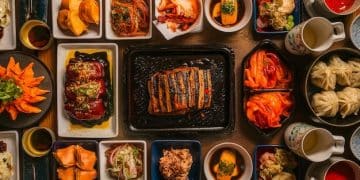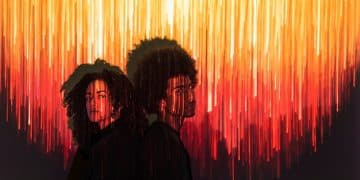K-Drama Historical Accuracy: Fact vs. Fiction in Period Dramas
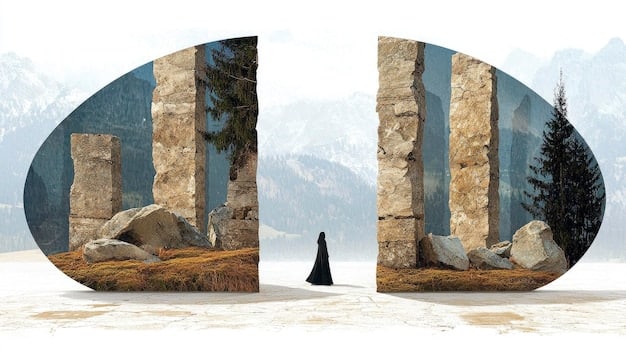
K-Drama historical accuracy varies significantly; while dramas like “Jewel in the Palace” strive for authenticity, others prioritize entertainment, blending real events with fictional narratives and characters for dramatic effect.
K-Dramas have captivated audiences worldwide with their compelling storylines, intricate characters, and stunning visuals. Among the most popular genres are historical dramas, which transport viewers to different eras of Korean history. But how much of what we see on screen is actually true? Let’s delve into the fascinating world of K-Drama historical accuracy, separating fact from fiction in popular period dramas.
The Allure of Historical K-Dramas
Historical K-Dramas, also known as “sageuk,” have a unique allure that draws viewers in. They offer a glimpse into Korea’s rich past, showcasing the lives of kings, queens, warriors, and commoners. These dramas often feature elaborate costumes, majestic palaces, and dramatic political intrigue, creating a visually stunning and emotionally engaging experience.
Beyond the entertainment value, historical K-Dramas can also spark an interest in Korean history and culture. Many viewers find themselves wanting to learn more about the historical figures, events, and customs depicted in these dramas. However, it’s important to remember that these are works of fiction, and creative liberties are often taken to enhance the storytelling.
Why Audiences Love Sageuk
Sageuk dramas offer a blend of history, romance, action, and political intrigue, making them appealing to a wide audience. The dramatic storylines, coupled with strong performances and high production values, contribute to their popularity.
- Escapism: They provide an escape to a different time and place, allowing viewers to immerse themselves in a world far removed from their own.
- Cultural Insight: They offer a glimpse into Korean history, traditions, and social structures, fostering a greater understanding and appreciation of Korean culture.
- Emotional Connection: The characters and storylines often resonate with viewers on an emotional level, creating a strong connection and investment in the drama.
Ultimately, the allure of historical K-Dramas lies in their ability to entertain, educate, and emotionally connect with audiences. While not always historically accurate, they offer a captivating window into Korea’s past.
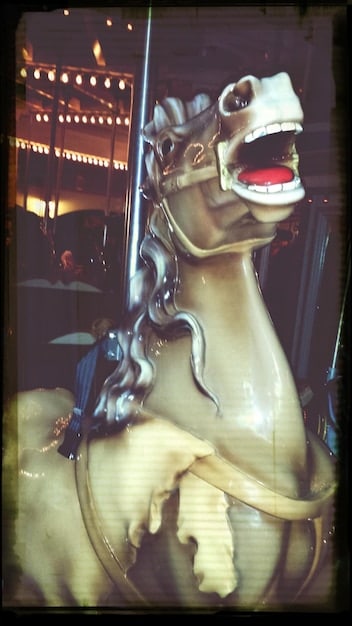
The Spectrum of Historical Accuracy
The degree of historical accuracy in K-Dramas varies significantly. Some dramas strive for a high level of authenticity, meticulously researching historical records and consulting with experts to ensure accuracy in costumes, settings, and events. Others prioritize entertainment over strict adherence to historical facts, using historical settings and figures as a backdrop for fictional narratives.
It’s important for viewers to be aware of this spectrum and to approach historical K-Dramas with a critical eye, recognizing that they are not documentaries. While these dramas can offer a general sense of the past, they should not be taken as definitive accounts of historical events or figures.
Dramas Leaning Towards Accuracy
Some K-Dramas are known for their commitment to historical accuracy, going to great lengths to recreate the past as faithfully as possible. These dramas often focus on well-documented historical periods and figures, and they incorporate historical research into their production.
For example, “Jewel in the Palace” (Dae Jang Geum) is celebrated for its detailed portrayal of Joseon Dynasty court cuisine and medical practices. While the drama does fictionalize aspects of Jang Geum’s life, it is based on a real historical figure and incorporates many authentic details about the period.
Dramas Taking Creative Liberties
Many historical K-Dramas prioritize entertainment over strict historical accuracy, using historical settings and figures as inspiration for fictional stories. These dramas often introduce fictional characters, alter timelines, and invent events to create more dramatic and compelling narratives.
- Fusion Sageuk: These dramas blend historical settings with elements of fantasy, romance, or action, creating a unique and often fantastical viewing experience.
- Alternative History: These dramas explore “what if” scenarios, imagining how historical events might have unfolded differently.
- Character Embellishment: Fictionalizing or exaggerating character traits and actions for dramatic effect.
While these creative liberties may not please history purists, they can add to the entertainment value of the drama and allow for more creative storytelling. However, it’s important for viewers to be aware that these dramas are not necessarily accurate depictions of historical events or figures.
Identifying Historical Distortions
Recognizing historical distortions in K-Dramas requires a combination of historical knowledge, critical thinking skills, and an awareness of the common tropes and narrative devices used in these dramas. Viewers can look for anachronisms, inconsistencies, and deviations from established historical facts to identify potential distortions.
It’s also helpful to consult reliable historical sources and expert opinions to verify the accuracy of the information presented in the drama. By doing so, viewers can gain a deeper understanding of the historical context and better distinguish between fact and fiction.
Common Tropes and Exaggerations
Historical K-Dramas often employ certain tropes and exaggerations to enhance the drama and appeal to a wider audience. These can include romanticized portrayals of historical figures, heightened political intrigue, and exaggerated displays of martial arts prowess.
“The King and Queen are always portrayed with unwavering loyalty and virtue.” This is rarely accurate, as political maneuvering and personal failings affect everyone.
Cross-Referencing with Reliable Sources
One of the best ways to verify the historical accuracy of a K-Drama is to cross-reference the information presented with reliable sources. These can include academic books, scholarly articles, historical documents, and expert opinions. This can help separate the realities from the dramatizations presented.
- Academic Texts: Consult history books written by reputable scholars.
- Primary Sources: Look for original documents from the period, such as diaries, letters, and official records.
- Expert Interviews: Seek out interviews or articles featuring historians or cultural experts who specialize in the relevant period.
By consulting these sources, viewers can gain a more nuanced understanding of the historical context and better distinguish between fact and fiction.
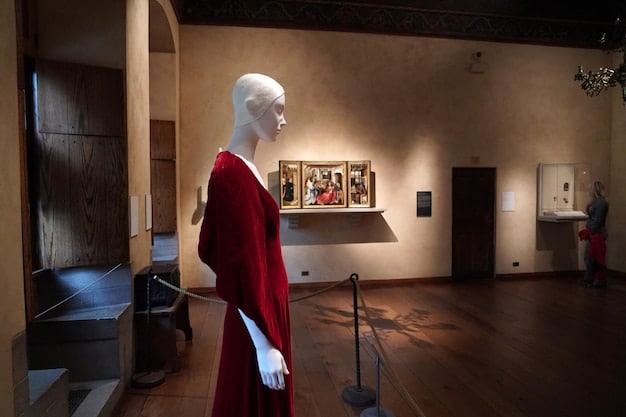
Examples of Dramas and Their Accuracy
Examining specific K-Dramas can provide valuable insights into the range of historical accuracy present in the genre. Some dramas, like “Jewel in the Palace,” make a conscious effort to incorporate authentic details and portray historical events accurately. Others, like many fusion sageuk dramas, prioritize entertainment over historical fidelity, using historical settings as a backdrop for fictional stories.
By comparing and contrasting different dramas, viewers can gain a better understanding of the creative choices made by filmmakers and the impact those choices have on the portrayal of history.
“Jewel in the Palace” (Dae Jang Geum)
This drama is praised for its detailed depiction of Joseon Dynasty court cuisine and medical practices. The drama’s creators consulted with historians and culinary experts to ensure the accuracy of the food preparation techniques, medical procedures, and court customs depicted on screen. However, some aspects of Jang Geum’s personal life are fictionalized for dramatic purposes.
Despite these creative liberties, “Jewel in the Palace” offers a valuable glimpse into the daily life of women in the Joseon Dynasty and their contributions to Korean society.
“Kingdom”
“Kingdom” blends historical drama with zombie horror, set against the backdrop of a politically turbulent Joseon Dynasty. While the political intrigue and social hierarchies are rooted in historical reality, the zombie outbreak is, of course, a fictional element.
The drama’s attention to detail in costumes, set design, and cultural customs adds to its immersive quality, even as it introduces fantastical elements. This blend of genres allows “Kingdom” to explore themes of power, corruption, and social inequality in a unique and engaging way.
“Mr. Sunshine”
“Mr. Sunshine” is a visually stunning drama set in the late 19th and early 20th centuries, during a period of significant upheaval and change in Korea. The drama depicts the struggles of Koreans as they navigate the encroachment of foreign powers and the decline of the Joseon Dynasty.
- Focus on the costumes to give accurate representation.
- Set designs of that era.
While the drama does take some creative liberties with historical events and figures, it accurately captures the atmosphere of the time and the challenges faced by Koreans during this period.
The Role of Filmmakers and Screenwriters
Filmmakers and screenwriters play a crucial role in shaping the portrayal of history in K-Dramas. They must balance the demands of entertainment with the responsibility of representing the past in a responsible and accurate manner. This can be a challenging task, as creative liberties are often necessary to create compelling narratives and appeal to a wider audience.
Ultimately, the choices made by filmmakers and screenwriters can have a significant impact on viewers’ perceptions of history, highlighting the importance of responsible storytelling and historical awareness.
Balancing Entertainment with Accuracy
The key to creating a successful historical K-Drama lies in finding a balance between entertainment and accuracy. Filmmakers must be willing to take creative liberties to create compelling narratives, but they must also be mindful of the potential impact of those choices on viewers’ perceptions of history.
It’s useful to strike a balance between appealing stories and accurate history.
The Impact on Viewers’ Perceptions
Historical K-Dramas can have a profound impact on viewers’ perceptions of history, particularly for those who may not be familiar with Korean history. These dramas can shape viewers’ understanding of historical figures, events, and cultural customs, for better or for worse.
- Education:Sparking an interest in history, prompting viewers to seek out further information, and fostering a greater appreciation of Korean culture.
- Misinformation: Spreading inaccurate or misleading information, perpetuating stereotypes, and distorting the historical record.
Filmmakers have a responsibility to be mindful of the potential impact of their work and to strive for accuracy and balance in their portrayals of history.
| Key Point | Brief Description |
|---|---|
| 🎬 Historical Drama Appeal | Blend historical settings, romance, & political intrigue. |
| 🔎 Verifying Accuracy | Cross-reference with academic texts & primary sources. |
| ⚔️ “Kingdom” | Blends Joseon Dynasty politics with a zombie outbreak. |
| ☀️ “Mr. Sunshine” | Showcases Korea during foreign powers encroachment era. |
Frequently Asked Questions
▼
No, the level of historical accuracy varies. Some strive for authenticity, while others prioritize entertainment with fictional elements. Verify claims against primary resources.
▼
Look for anachronisms and inconsistencies. Cross-reference events with reliable historical sources, such as academic books and documentaries.
▼
These dramas blend historical settings with elements of fantasy, romance, or action. Strict historical accuracy is not the primary focus of these dramas.
▼
Creative liberties enhance storytelling, engage viewers and explore themes more dynamically than strict historical adherence allows. Creative license is necessary sometimes.
▼
Yes, they can spark interest in Korean history and culture. However, they should be viewed with a critical eye, and information should be verified with reliable sources.
Conclusion
In conclusion, while historical K-Dramas offer a captivating glimpse into Korea’s past, viewers should approach them with a discerning eye, recognizing the blend of fact and fiction. By verifying information and being mindful of creative liberties, audiences can appreciate them for their entertainment value without misconstruing them as definitive history lessons.

